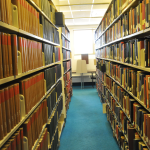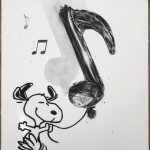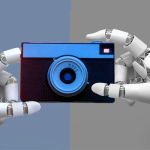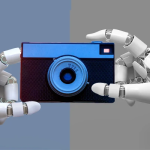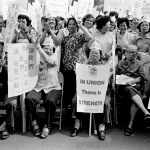AI in photography is reshaping the visual landscape in unprecedented ways, blending technology and creativity to enhance the art of image-making. As photojournalists grapple with the implications of AI technology, including issues of copyright and misinformation, there exists a unique opportunity to harness these advancements for ethical visual storytelling. This technology holds the potential to reorganize vast image archives, making hidden gems of photojournalism more accessible and preserving vital historical narratives. With the rise of AI, the stakes are high; it challenges photographers to balance innovation with the integrity of their art. Ultimately, the integration of AI could redefine photography ethics, ensuring that both the craft and its legacy endure in an increasingly digital age.
The intersection of artificial intelligence and photography is revolutionizing how we capture and interpret images in contemporary society. Innovations in machine learning are not only enhancing photojournalism but are also prompting critical discussions around visual documentation and the role of technology in storytelling. This new era poses significant questions about the preservation of image archives and the ethical implications of manipulating visual data. As creators explore the capabilities of AI tools, they engage in an ongoing dialogue about preserving the authenticity of their works while embracing the future. The relationship between AI and photography is complex, encompassing both the artistic possibilities and the challenges related to trust and authorship.
Understanding AI in Photography
Artificial Intelligence (AI) is rapidly transforming the landscape of photography, impacting both the craft and the industry. As Kira Pollack, a renowned visual storyteller, notes, AI’s advance brings forth both opportunities and challenges. On one hand, AI enhances the creative process, offering tools that can generate new images based on existing data. On the other hand, it raises significant ethical concerns, particularly in photojournalism, where the integrity of images is paramount. Understanding how AI can be harnessed creatively while respecting the established norms of photography is crucial as we navigate this new era.
Moreover, the integration of AI into photography allows for more extensive archiving and cataloging of images, thus preserving the visual history for future generations. Pollack believes that AI can help organize vast collections of photography, ensuring that the stories behind the images are not lost. However, it is essential to tread carefully, as the use of AI must not compromise the original intent of the photographers or the authenticity of the captured moments. The dialogue around AI in photography is essential, encompassing both innovation and the preservation of ethical values.
The Role of AI in Preserving Photojournalism
Photojournalism is witnessing a significant shift due to the advent of AI technology, which offers novel solutions for the preservation of image archives. Photojournalists have accumulated a wealth of images documenting crucial moments in history, yet much of this work remains unseen. By utilizing AI to categorize and highlight these archives, there is potential for public engagement with a vast reservoir of visual storytelling. As Pollack indicates, the challenge lies not only in preservation but also in depicting the layers of meaning inherent in conflict photography and historical documentation.
By experimenting with AI tools, photojournalists can unlock stories that may have otherwise faded into obscurity. For instance, AI’s ability to analyze and interpret the emotional contexts in photos could enrich understanding and appreciation of the narratives behind them. However, it is vital to ensure that this technological assistance does not lead to the commodification of authentic images or exploit the labor of photographers, addressing the urgent copyright concerns surrounding AI. Balancing innovation with respect for photographic integrity is critical as the industry adapts to these changes.
Ethics of AI and Photojournalism
The ethics of employing AI in photography, particularly within photojournalism, presents a landscape fraught with dilemmas. With AI’s capacity to generate and replicate images, there is a looming concern regarding the erosion of trust in visual truths. As Pollack points out, when images can be created without a real-world basis, the authenticity of news reporting is jeopardized. This raises critical questions about ownership, authorship, and the inherent responsibilities of both photographers and technologists in today’s media landscape.
Moreover, the risk of AI systems scraping photographers’ work to train models without consent amplifies these ethical concerns. It is essential for the community, including technologists and journalists, to engage in ongoing conversations about how to navigate these issues responsibly. Strategies must be established to protect the rights of photojournalists while exploring how AI can enhance their work. Maintaining clear distinctions between genuine photojournalism and AI-generated imagery is crucial for preserving the public’s trust in the media.
Legacy and Authorship in the Age of AI
As AI technology continues to evolve, the concepts of legacy and authorship in photography are being redefined. Photographers like Pollack emphasize the importance of understanding how their work will be perceived in an era increasingly influenced by generative AI. The reality is that many iconic images stem from unique perspectives and lived experiences—elements that cannot be replicated by machines. Safeguarding the narratives that these photographs represent is vital to ensuring that future generations appreciate their historical significance.
In addition, there is a pressing need for photojournalists to establish clear guidelines and frameworks surrounding the use of AI in their work. It is essential to balance the benefits of AI in enhancing visibility and engagement with the necessity of maintaining artistic integrity. By fostering a deeper understanding of how AI affects authorship and the narratives woven into images, the photography community can work towards responsible stewardship of its visual heritage, ensuring that creativity and authenticity coexist harmoniously.
Challenges of Photo Archives in the Digital Age
The fate of photo archives is a major concern for the future of photojournalism, particularly in the context of rapidly changing technology. Many invaluable images lie dormant in collections, unseen and underappreciated. Pollack articulates the urgency of this issue, highlighting that a significant proportion of images captured by photographers throughout their careers may never see the light of day. In an age where information can be lost or distorted, it is paramount to find effective methods of cataloging, preserving, and accessing these archives.
AI technology presents a unique solution to these challenges, as it can streamline the organization and retrieval of vast amounts of visual data. By implementing AI-driven systems, photojournalists can not only preserve their images but also enhance their visibility to new audiences. Nonetheless, the challenge lies in incorporating AI ethically, ensuring that photographers’ rights are respected and that the original stories behind the images remain intact. Achieving this ideal will require collaboration between technologists and photographers, fostering a framework that honors the past while embracing the future.
The Intersection of Technology and Visual Storytelling
Visual storytelling through photography has always been a crucial aspect of conveying powerful narratives, and the rise of AI technology is reshaping this process in unprecedented ways. AI offers tools that can analyze and enhance the storytelling capacity of images, allowing for a deeper, more nuanced connection with audiences. By employing AI, photographers can elevate the emotional resonance of their work, drawing viewers into the scenes and stories captured through their lenses.
Nevertheless, as Pollack cautions, the use of AI must be approached with care, as it also introduces the risk of oversimplifying complex narratives. The challenge is to leverage AI’s capabilities while maintaining the integrity and authenticity of the stories being told. The intersection of technology and visual storytelling invites a re-examination of what it means to be a photographer in today’s digital age, underscoring the need for a thoughtful approach to innovation.
Navigating Copyright in the Age of AI
As AI becomes an integral part of the photography landscape, navigating the complexities of copyright becomes increasingly critical. The potential for AI tools to scrape and utilize photographers’ work without consent raises urgent concerns regarding ownership and intellectual property rights. Pollack emphasizes the necessity of protecting photographers in this new technological realm, ensuring that their images are not exploited without their knowledge or permission.
Addressing these copyright challenges requires ongoing dialogue among stakeholders in the photography community, including photographers, technologists, and legal experts. Establishing clear frameworks for the fair use of images in AI training and emphasizing the importance of consent are essential steps moving forward. By prioritizing the rights of photographers, the industry can better safeguard the integrity of their work while still exploring the innovative possibilities that AI has to offer.
The Future of Photojournalism with AI
Looking forward, the future of photojournalism is inextricably linked to the development and integration of AI technologies. As Kira Pollack prepares for her fellowship at the Shorenstein Center, her goals include investigating how these technologies can reinforce the core values of journalism—truth, authorship, and memory. The hope is that AI can serve as a tool for empowerment, enabling photojournalists to document reality more effectively while preserving their legacy and the stories behind their images.
However, the path ahead is not without its challenges. Striking the right balance between embracing technological advancements and safeguarding the essence of photojournalism requires proactive conversation and collaboration among industry leaders, ethicists, and policymakers. The photojournalism community must continue to adapt and innovate, ensuring that as we advance into this new era, we protect the integrity of visual storytelling and uphold the standards that define the profession.
Engaging the Community in Ethical AI Practices
As AI continues to shape the future of photography, it is vital for the community to engage in discussions about the ethical implications of this technology. Pollack stresses the importance of dialogue with stakeholders from various fields—technologists, journalists, ethicists, and policymakers—to consider the larger questions that arise in the context of AI’s impact on visual storytelling. By fostering a multidisciplinary approach, the photography community can cultivate a more comprehensive understanding of how to navigate the ethical landscape surrounding AI.
Encouraging collective engagement on these issues not only leads to greater awareness but also helps establish best practices and standards to guide the responsible use of AI in photography. Collaboration will be vital in ensuring that the implementation of AI preserves the values of journalism while also enhancing the capabilities of photojournalists. By advocating for ethical AI practices, the photography community can work towards a future that respects the integrity of visual narratives.
Frequently Asked Questions
How is AI technology impacting photojournalism today?
AI technology is revolutionizing photojournalism by offering tools for image analysis, organization, and preservation. This technology can help photojournalists catalog their vast image archives, ensuring that critical visual storytelling is not lost. Moreover, AI can analyze complex scenes and provide insights that enhance the understanding of photographs, although concerns about misinformation and copyright remain paramount.
What ethical concerns arise from using AI in photography?
The integration of AI in photography raises significant ethical concerns, particularly regarding copyright infringement and the potential for misinformation. Photographers worry that their images may be used without consent to train AI systems. Additionally, the creation of photorealistic images by AI without human involvement poses a risk to the authenticity and integrity of visual storytelling in photojournalism.
Can AI help preserve image archives for future generations?
Yes, AI has the potential to significantly aid in preserving image archives. By organizing and contextualizing vast collections of photographs, AI can make these archives more accessible and discoverable. This is crucial to preserving the visual history captured by photojournalists and ensuring that their legacies are not lost in the transition to digital formats.
How can AI contribute to ethical visual storytelling in photography?
AI can enhance ethical visual storytelling by providing tools that support the accurate representation of events and the emotions captured in photographs. By aiding in the analysis of images, AI can help reinforce the truth behind the visual narratives presented in photography, allowing photojournalists to uphold high standards of authenticity and integrity.
What role does artificial intelligence play in the future of image analysis?
Artificial intelligence is poised to play a pivotal role in the future of image analysis by enabling sophisticated assessments of photographs. AI can identify critical elements within images, such as emotions, context, and composition, thus offering deeper insights into photojournalism. This capability not only enhances storytelling but also helps maintain the history and accuracy of visual archives.
Is there a risk of AI distorting the perception of reality in photography?
Yes, there is a significant risk that AI could distort the perception of reality in photography, especially as generative AI creates photorealistic images. In a fast-paced news environment, such images can spread misinformation, challenging the public’s trust in visual media. It is vital for photojournalists to use AI responsibly to preserve authenticity while safeguarding against manipulation.
How can photojournalists ensure their work is secure from unauthorized AI training?
Photojournalists can protect their work from unauthorized AI training by establishing clear copyright agreements and licensing terms. It is essential for photographers to advocate for their rights and engage with technology companies to ensure that their images are not used without permission. Additionally, developing AI tools that respect authorship and ethical standards is crucial for protecting the integrity of photography.
What challenges do photojournalists face with the advent of AI in their field?
Photojournalists face multiple challenges with the advent of AI, including coping with the risk of misinformation, dealing with copyright issues related to their work, and the potential devaluation of the craft as AI-generated images proliferate. As AI technologies evolve, it is crucial for photojournalists to adapt and find ways to leverage these tools while maintaining the core values of their profession.
How important is it for AI to complement rather than replace photography?
It is crucial for AI to complement rather than replace photography to uphold the values of truth, authorship, and memory in visual storytelling. While AI can assist in organizing and analyzing images, it should not supplant the creative vision and authentic experiences of photographers. Ensuring a synergistic relationship between AI and human creativity is essential for the future of photography.
What developments should the photojournalism community expect regarding AI technology?
The photojournalism community should anticipate continuous advancements in AI technology aimed at enhancing workflows, improving image analysis, and preserving archives. As AI tools become more sophisticated, there will be greater emphasis on ethical considerations, legal frameworks, and the need for collaboration among technologists, photographers, and ethicists to shape a responsible future in visual media.
| Key Points |
|---|
| AI’s impact on photography includes both threats and opportunities, with significant consequences for photojournalists. |
| Kira Pollack believes AI can assist in preserving photojournalistic archives and enhance storytelling. |
| Concerns about copyright and misinformation in AI-generated images are critical issues for the photography community. |
| AI has the potential to analyze complex conflict photography and extract nuanced insights. |
| Pollack’s research aims to reconcile the use of AI in preserving archives while maintaining trust in visual media. |
| The Shorenstein Fellowship provides a platform for interdisciplinary dialogue about AI’s role in photography. |
Summary
AI in photography is a rapidly evolving field that brings both challenges and opportunities. Kira Pollack’s pioneering efforts highlight the potential for artificial intelligence to not only preserve the visual history captured by photographers but also to enhance the way these narratives are understood. By focusing on the safe, ethical use of AI, Pollack aims to ensure that these powerful tools serve the fundamental values of photography: authenticity, authorship, and memory. As the dialogue surrounding technology and visual communication continues to grow, it is crucial for photographers to engage with AI responsibly, ensuring their legacies endure in a world that is increasingly influenced by digital innovation.





